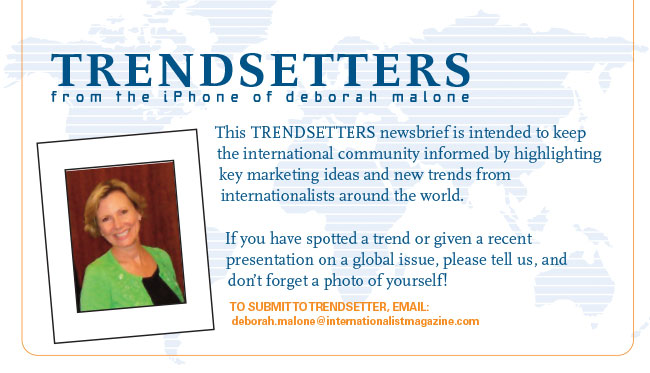


Barbara Basney
Trendsetters: Barbara Basney of Xerox Talks about the Role of Content in Transforming a Legacy Brand
Barbara Basney in her role as Vice President of Global Advertising and Media has been at the forefront of an extraordinary evolution of the Xerox Corporation as the world-renown company has transformed from its heritage in document technology to the leading enterprise for business processes services throughout the globe. Over the past several years, she has not only worked to communicate the significance of this transition for so iconic a brand, but has also embraced new ways of advertising. She acknowledges new thoughts about content are shifting the way she approaches her work, and recently shared her views during the ANA's Masters of Marketing Conference during a Friday panel with other Internationalists.
Barbara admits that Xerox has undertaken a "massive transformation." Today, more than half of the company's revenues come from business processes or "back office solutions and services" for companies, governments and municipalities around the world--in areas like Human Resources, Customer Care, Healthcare, Public Transportation, and Finance and Accounting.
The idea of conveying just what today's Xerox does for customers is at the core of Barbara's role, and campaigns like "Made Simple by Xerox" and "Ready for Real Business" have reshaped how customers in over 180 countries-- from small businesses to large global enterprises– perceive the brand. Barbara says, "There are many ways that we're helping our customers around the world simplify the way work gets done, so they can focus on what really matters—their real business."
Integral to the success of these programs is content, and Barbara Basney is the first to acknowledge that today's advertising environment, more than ever before, lends itself to the use of content to create essential conversations with key brand audiences. "It's a super powerful tool," she says, "as it provides a great opportunity for relevant storytelling, which is so critical to expressing a brand voice today."
However, she also admits, "At Xerox, we are trying to be very careful with a platform like Real Business to only present content on topics with which we'd like align our brand—rather than talk just about us. True thought leadership provides something of interest to a key audience segment. A vignette or piece of information can also attract attention, because it is unexpected. We want people to be pleased or intrigued that a memorable element of content was brought to them by Xerox. It demonstrates that we care about our audience. And in today's ‘sharing environment,' it doesn't hurt when someone passes on something we provide them, or other media pick up some of these articles."
She continues: "Chest-beating is easy for brands—it's largely been our history. Inviting someone in is difficult. Finding an angle that is interesting and thought-provoking enough for a person to internalize or attentively consider is far more powerful than any straight-forward message."
Barbara Basney can talk at length about the evolution of content creation, how it affects her thinking about paid, earned and owned media, as well as her experimentation with new content platforms—including variations of native advertising, sponsored opportunities, and what she terms as "the many shades of grey" surrounding content and advertising-- or an area that she reminds us was defined as "church and state" not so long ago. Still, she recognizes that the essential benefit of any content play is to insure that it adds benefit to an audience eager to consume information relevant to their needs.
Native advertising does play a role in Xerox's marketing mix. Yet, Barbara also notes paradoxically, "The opportunity of native advertising is also its challenge." She believes it is difficult to create content that seamlessly integrates with a publisher's brand, while also factoring in how the native environment should optimally align with an advertiser's message. In other words, the process can be tricky at best. "It's hard to execute equally well for both the advertiser and the publisher," she says.
Yet, Xerox has been quite innovative and successful in its use of native advertising, or integrating its marketing content with a third-party website. Barbara admits that a number of initiatives have helped to change perceptions and further the repositioning of the Xerox brand.
In addition to the complexity of finding the right native advertising alignment for both the advertiser and publisher, her advice is to substantially edit any company-generated content to be sure it meets standards of quality and relevance, and is also appropriate and respectful of both the advertiser's brand and the publisher's site. She stresses, "It all needs to work together to tell a story."
She also advocates creating rules for rigorous content creation standards. "Too often, the content a brand wants to share is not of great interest to the audience, or it appears too much like marketing material. Always consider quality and relevance."
Barbara Basney is a member of THE INTERNATIONALIST 1000 initiative--1000 Marketers Around the World Reshaping the Future of Marketing in global partnership with the ANA/Association of National Advertisers.. She is also a chapter contributor in the upcoming book, The Reinvention of Marketing, to debut this fall, published by The Internationalist Press with the ANA.
